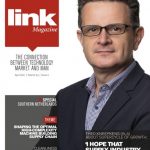Initiating crossovers between knowledge institutions and companies and connecting young and experienced people. That is how Eindhoven Engine intends to unlock the ‘collective intelligence’ of the Brainport region in the south of the Netherlands, with the aim of speeding up the transition from fundamental knowledge to application that is ready for the market. The first successes inspire an even more extensive follow-up.
Foreign parties also welcome in crossover projects
In response to the first two calls by Eindhoven Engine, twice as many projects were submitted as could be funded. Clearly, there is no lack of interest in the programme, which is aimed at unlocking the ‘collective intelligence’ of the Brainport region in the south of the Netherlands (proclaimed the world’s ‘smartest region’ in 2011). This intelligence of knowledge institutions such as Eindhoven University of Technology, TNO and Fontys University of Applied Sciences and of companies such as ASML, NXP, Philips and VDL is expressed in a number of sectors and a number of key social challenges for which this region develops and builds the high-tech equipment. Of course, this concerns ASML’s EUV chip machines and innovations from Philips Healthcare, but that brainpower also surfaces in harvesting robots and precision farming systems for the agricultural sector, as Maarten Steinbuch and Katja Pahnke point out.
Crossovers
Together they form the day-to-day management of Eindhoven Engine. The word ‘crossovers’ crops up regularly in the conversation with them. The best way to release this collective intelligence is by linking knowledge institutions such as the universities and universities of applied sciences in question, where the knowledge is still more fundamental – at a ‘low Technology Readiness Level’ – to the business world, which is keen to see that knowledge applied to a product in order to generate business. ‘When Philips still operated in numerous sectors with its renowned Natlab, a great deal of fundamental knowledge from various disciplines was brought together there. But Philips is now focusing only on medical technology. That’s why Eindhoven Engine is necessary, in order to cross the boundaries of disciplines more quickly to develop applications that are ready for the market,’ Steinbuch explains. ‘And it’s not just a matter of bringing disciplines and various sectors together. The Engine brings together young students and experienced researchers, designers and innovators. This combination of young and old strengthens the creative and out-of-the-box thinking that is so important for creating applications with a good business model,’ Pahnke adds.
Support team
The role of the Eindhoven Engine Support Team, consisting of experts from, for example, the three shareholders – TU/e, Fontys and TNO – is to help unlock that collective intelligence. An essential role, they both stress: ‘That team brings together all those ideas, experiences and people from numerous organisations; by personally establishing the link with companies, but also by organising training courses, seminars or – these days – clubhouse chats.’
Artificial womb
Fifteen projects are currently underway. One that stands out is Juno Perinatal Healthcare. This is a project in which a consortium including LifeTec Group, Máxima Medical Center, NEMO Healthcare, RWTH Aachen and TU/e is developing an advanced artificial womb, in which babies 20 to 24 weeks old, who still have insufficient lung function, can develop into healthy infants. Another project, POWer FITTing, focuses on developing a (home) office environment that keeps its users as vital as possible. This is done by collecting and analysing data and integrating the insights into user-focused solutions. Involved in the project are HC Oranje-Rood, IMEC, TNO, TU/e and Fontys, with students of Sports Medicine, but also of Nursing and Psychology.
Scaling up

Theo Kneepkens
(KLA) about supercycle of growth: Í hope that supply industry expands its capacity’. Read this edition of link magazine digitally via this link
The fifteen ongoing projects represent a ‘turnover’ of 45 million euros, approximately 6 million of which has been provided by the regional government, from the Brainport Action Agenda, the rest comes – in kind or in cash – from the participating knowledge institutions and companies. This year and next year there will be two more calls for projects to the tune of 30 million euros, for which over 4 million euros in match funding is available from the government; the application deadline for the next call is 13 May.
Once the entire approximately 75 million euros has been invested, the funds from the ‘current Region Deal’ will have been used. Plans are already being made for a follow-up, under the name of Eindhoven Engine Enlarged. ‘We seek to generate a total amount of 120 million euros with it. This means scaling up, because we see a great demand for crossover projects that can unlock the collective intelligence of this region,’ says Steinbuch.
Foreign parties too?
Can foreign parties also join in? ‘We have an independent expert committee that assesses the project proposals. If the quality is high enough, if knowledge is not only extracted but also contributed and if it benefits the activity and human capital in this region, companies from elsewhere are also welcome to join the consortia,’ says Pahnke.






